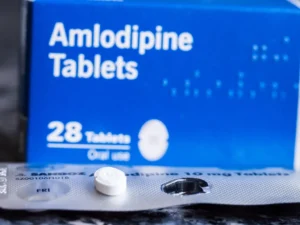Swelling of the ankles, also known as edema, is a common condition that can be caused by a variety of factors. In many cases, this may just be as simple as being on your feet all day, wearing the wrong type of shoes, or because of varicose veins that are not able to clear the fluid out of the feet and legs properly. In some cases, it may be a sign of an underlying health issue. Understanding the causes of ankle swelling and how to evaluate it is important for maintaining overall health.
Causes of Ankle Swelling
Ankle swelling can be caused by many different factors, including:
- Gravity and Sitting/Sedentary Lifestyle: Prolonged sitting or standing can lead to fluid retention in the lower extremities, including the ankles.
- Injury or Trauma: Ankle injuries, such as sprains or fractures, can cause swelling as part of the body’s natural healing response
- Pregnancy – Pregnant women may experience ankle swelling due to increased fluid retention.
- Poor circulation – Poor circulation can cause fluid buildup in the ankles, especially in people who sit or stand for long periods of time.
- Medications – Certain medications, such as calcium channel blockers or corticosteroids, can cause ankle swelling as a side effect.
- Heart, liver, or kidney disease – Ankle swelling can be a sign of a serious health issue such as heart, liver, or kidney disease.
- Lymphedema – Lymphedema is a condition where lymphatic fluid accumulates in the legs, leading to swelling.
Evaluating Ankle Swelling
When evaluating ankle swelling, there are a few things to consider:
- Location – Note whether the swelling is limited to one ankle or both ankles.
- Time of day – Swelling that is worse at the end of the day may be a sign of poor circulation.
- Pain or discomfort – Note if there is pain or discomfort in the swollen area.
- Other symptoms – Note any other symptoms, such as shortness of breath, fatigue, or fever, which may indicate an underlying health issue.
- Duration – Note how long the swelling has been present, as prolonged swelling may be a sign of a more serious condition.
Evaluating Ankle Edema and Associated Symptoms
A thorough evaluation of ankle edema is crucial for identifying its cause and potential complications. It’s vital to examine not only swelling but also associated symptoms like shortness of breath, chest pains, palpitations, and fatigue. These symptoms might signal broader cardiovascular or systemic concerns needing close assessment.
Preliminary Tests for Accurate Diagnosis
To begin the diagnostic process, healthcare professionals may recommend several preliminary tests. These tests play a crucial role in identifying potential causes and guiding further investigation. Electrocardiograms (ECGs) can help assess heart function and detect any irregularities that might contribute to edema. An echocardiogram (echo) provides detailed images of the heart’s structure and function, aiding in the assessment of cardiac health.

Figure showing the application of echocardiography (echo) as a diagnostic tool to assess potential causes of ankle edema. Echo provides detailed images of the heart’s structure and function, offering valuable insights into cardiac health. In the context of ankle edema, an echo can aid in evaluating heart function, including diastolic function, which involves the heart’s relaxation phase.
Rule Out Clots and Assess Venous Health
An ultrasound of the leg veins can be employed to rule out the presence of blood clots (deep vein thrombosis) as a cause of ankle swelling. This non-invasive imaging technique helps evaluate the blood flow and integrity of the veins in the lower extremities. Identifying or excluding clotting disorders is critical for appropriate treatment planning.
Comprehensive Blood Tests
Blood tests are valuable tools in diagnosing the underlying factors contributing to ankle edema. Testing electrolyte levels can help identify any imbalances that might be influencing fluid retention. Thyroid function tests are essential in assessing the thyroid’s impact on metabolism and fluid regulation. Comprehensive blood work provides insights into overall health and contributes to a well-rounded diagnostic picture.
Further Imaging and Investigation
Based on the results of preliminary tests and blood work, additional investigations may be warranted. In cases where more detailed anatomical information is needed, computed tomography (CT) scans can provide high-resolution images of the affected areas. These scans are particularly useful when assessing potential structural abnormalities or blockages in the circulatory system.
General Tips to help manage ankle swelling
Effectively managing ankle edema involves a combination of proactive habits and informed decisions. Whether you’re seeking relief from mild swelling or aiming to prevent its recurrence, here are some actionable tips to help you navigate ankle edema and promote overall well-being. These strategies encompass lifestyle adjustments, self-care practices, and considerations to address potential underlying causes, offering you a holistic approach to tackling ankle swelling. Keep in mind that consulting a healthcare professional for personalized guidance is always recommended, especially if your symptoms are persistent or concerning.
-
Elevate Your Feet: Elevating your feet above heart level for periods of rest can assist in reducing fluid accumulation in the ankles.
-
Stay Active: Engage in regular physical activity to improve circulation and prevent fluid buildup. Simple exercises like ankle pumps and foot circles while seated can be helpful.
-
Compression Garments: Consider wearing compression stockings as advised by a healthcare professional. These garments aid in improving blood flow and reducing swelling.
-
Healthy Diet: Reduce sodium intake and focus on a balanced diet rich in fruits, vegetables, and whole grains. Adequate hydration is also important.
-
Monitor Salt Intake: Minimize your consumption of high-sodium foods, as excessive salt can contribute to fluid retention.
-
Magnesium: Plays a role in maintaining proper electrolyte balance, which in turn impacts how fluids are managed within tissues. A deficiency can disrupt this delicate equilibrium, leading to fluid retention and edema, particularly in areas like the ankles. To address ankle edema related to magnesium deficiency, consider including magnesium-rich foods in your diet, such as leafy greens, nuts, seeds, and whole grains. Alternatively, magnesium supplements can be considered under medical guidance.
-
Limit Sitting or Standing: Avoid extended periods of sitting or standing, as they can hinder proper circulation and contribute to swelling.
-
Medication Review: Consult your healthcare provider to assess if any medications you are taking might be contributing to ankle edema. Adjustments or alternatives can be explored.
-
Manage Underlying Conditions: If you have conditions such as heart or kidney issues, follow your healthcare provider’s recommendations closely to minimize edema.
-
Massage and Movement: Gently massaging the swollen area and practicing ankle movements can aid in fluid drainage and reduce discomfort.
-
Monitor Progress: Keep track of changes in swelling and any associated symptoms. If there’s no improvement or the swelling worsens, consult a medical professional.
-
Diuretics: In some cases, healthcare providers may prescribe diuretics to help reduce fluid retention. However, their use should be under medical supervision.
-
Avoid Tight Clothing: Avoid wearing tight clothing or accessories that might constrict blood flow around the ankles.
Remember, these tips are general guidelines. Ankle edema can have various underlying causes, so it’s important to consult a healthcare provider for personalized advice tailored to your specific situation.
Conclusion
In summary, ankle swelling can be frustrating, particularly when accompanied by other symptoms or prolonged duration. Understanding the causes and assessment of ankle swelling empowers individuals to prioritize their well-being. If you’re experiencing ankle swelling, consulting your doctor can help diagnose the issue and create an effective treatment plan. Often, reviewing medications can pinpoint contributors and lead to lasting symptom relief.



